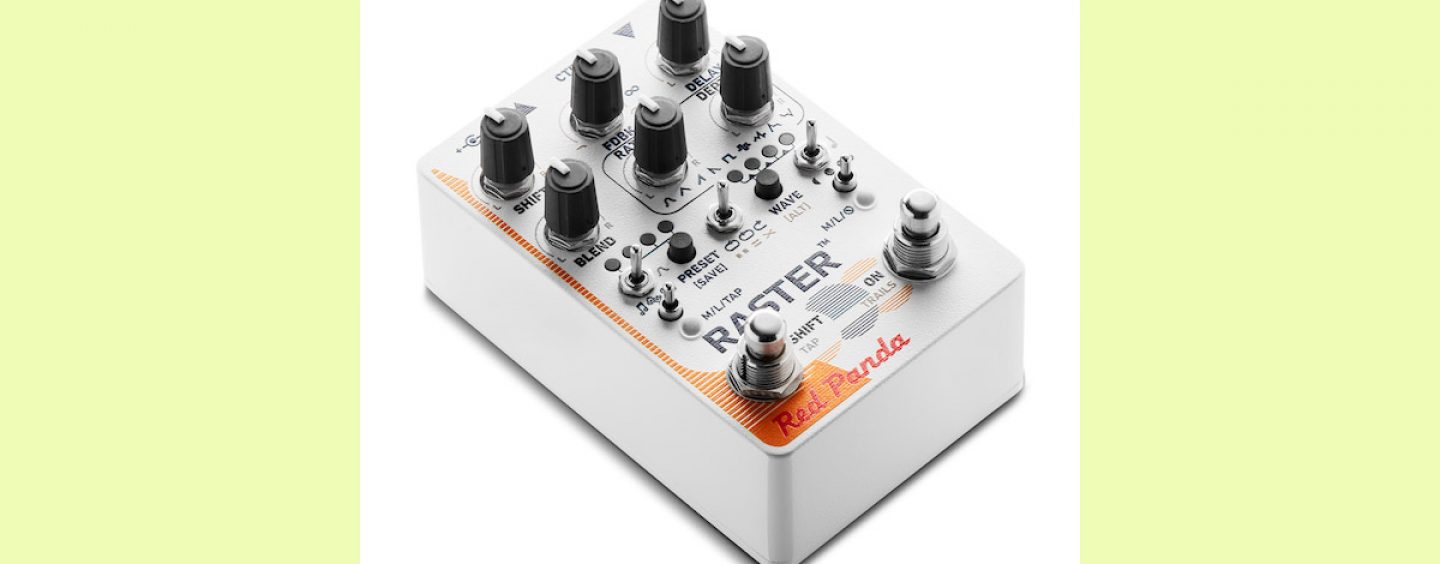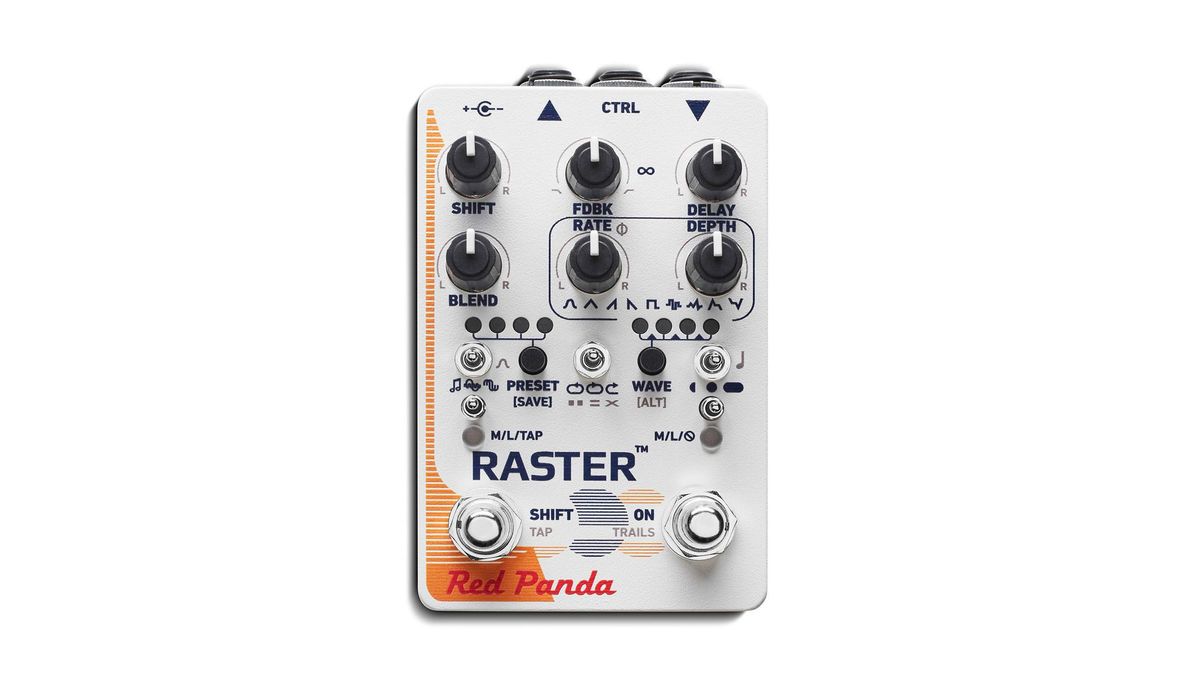

Red Panda Raster, Gitarski efekt, RPA-RASTER, Raster je digitalno odgaanje s pomakom koraka i frekvencije integriranim u povratnu petlju.

There are two random waveforms for glitchy sliced delays or random pitch shift, wow and flutter, and broken tape deck effects. M Muziker club 0800 140 055 Besplatni pozivi (pon - pet 09:00-17:00) Hrvatska - kn Sve kategorije Prijava Registracija novog korisnikog rauna 0 0 0 Koarica Popusti. Envelope and inverse envelope enable dynamic flanging and pitch bent delays. Stereo controls adjust the modulation amount and phase between channels, for subtle shifts or swirling psychedelic washes. The Raster 2 is performance friendly, with 6 knobs and 9 switches. The original Raster was praised for its knob response and immediacy, and the Raster 2 maintains that simplicity while adding flexible modulation and extensive stereo functionality. Alternate knob settings are related to the primary knob function, labeled, and off at the center position.

Both footswitches can be latching or momentary, for instant pitch jumps or quick blasts of echo. The bypass switch can also mute the output in bypass while always listening, to catch, repeat, and manipulate what you just played.
#Red panda raster instructions professional#. We also have a web-based editor for tweaking and managing your presets.ĭesigned and assembled in USA. The expression pedal can be assigned to any combination of parameters. One preset available on the left footswitch, 4 using a remote footswitch, and 127 via MIDI. Holding down the foot switches gives you two different types of infinite sustain. The low and high damping knobs adjust dynamics for ducking reverb or an expander for more reverb on louder notes, with adjustable threshold and recovery time. When the shift button is held down, the top row of knobs adjust delay parameters. The Context can create ghostly reverb effects, slowly sweeping resonances, and at higher modulation settings is a multi-voice granular processor that creates clouds of detuned sound fragments for entirely new reverb sounds. The SST-282 was released in 1978 and used multiple delay taps with modulation to create reverb effects. Grain mode is a granular reverb inspired by the Ursa Major SST-282 Space Station. The modulation is tremolo with adjustable intensity and speed. You can adjust the length of the decay, high and low frequency damping. The spring reverb was designed using the techniques and algorithms that were used in 1980's reverbs, but with enough DSP power to drip and feel like a spring tank. Reverse reverb fades in louder and brighter over time, giving the impression of playing backwards. Holding down the shift button adjusts the modulation rate. It gives you a mix of different modulation types from 1980's and early 90's reverbs, including chorus modulation, random modulation that keeps the pitch stable, and deep modulated reverbs. The modulation knob changes the amount and character of the internal reverb modulation, specific to each algorithm. In addition, delay is always available, along with tremolo in spring mode. Each algorithm features separate high and low frequency damping controls, pre-delay, modulation, dynamics (duck/expand), and infinite hold. It has 8 algorithms, including room, hall, cathedral, gated reverb, reverse reverb, plate, spring, and a granular reverb. The Context is a reverb pedal inspired by 1980's rack mount reverbs.







 0 kommentar(er)
0 kommentar(er)
